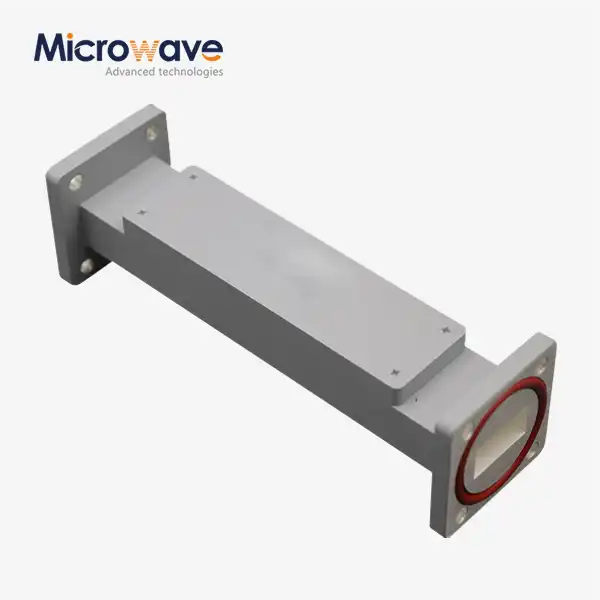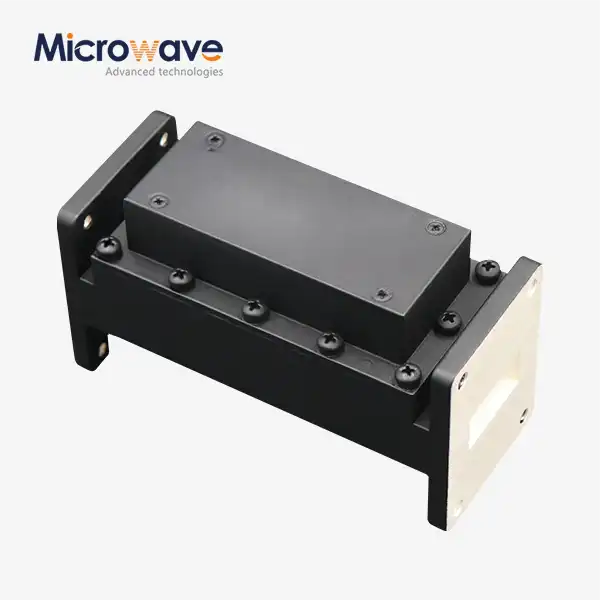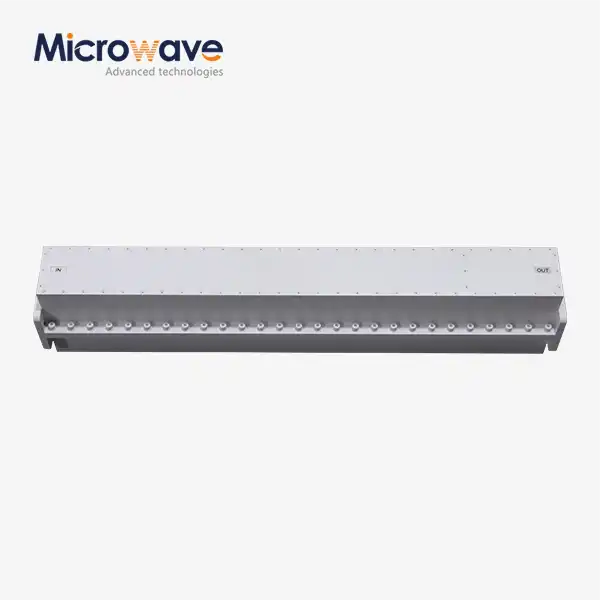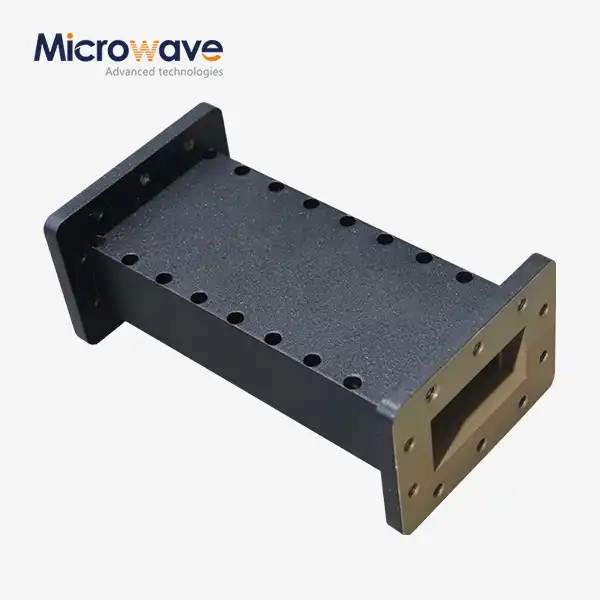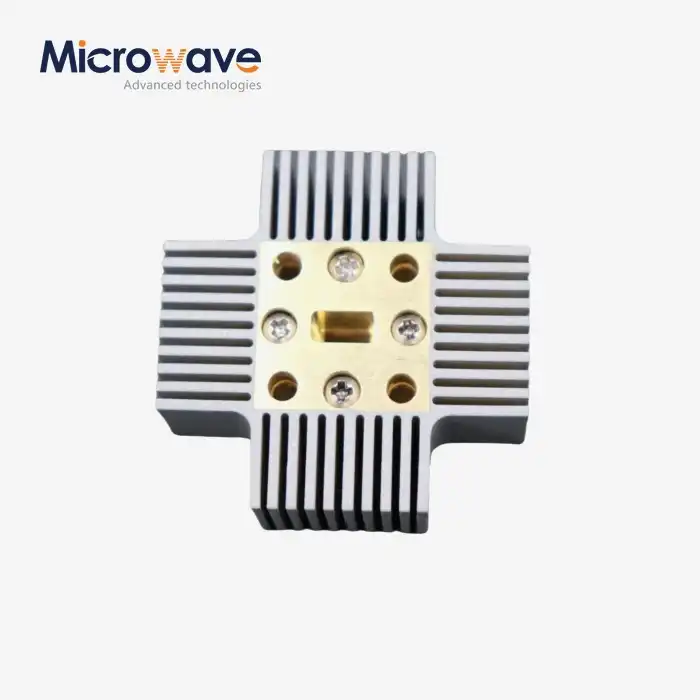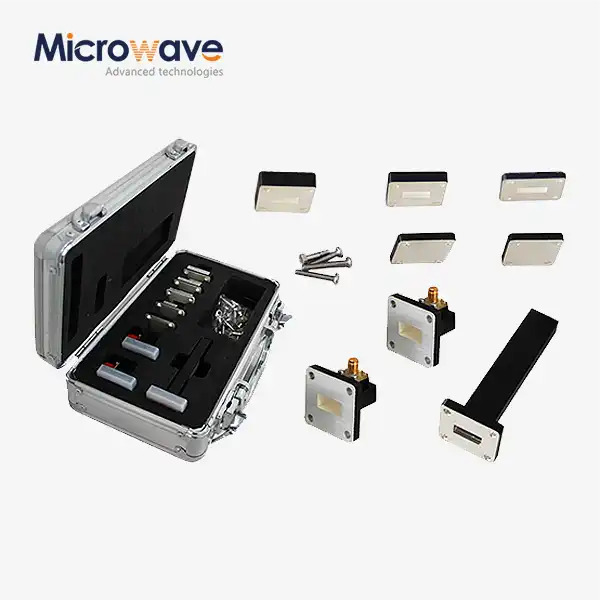How do you design a highly efficient WG High Pass Filter?
Designing a highly efficient waveguide (WG) high pass filter requires precision engineering and thorough understanding of electromagnetic principles. These specialized components play a crucial role in modern communication systems by allowing signals above a certain cutoff frequency to pass while effectively attenuating lower frequencies. The design process involves careful consideration of cutoff frequency requirements, impedance matching, physical dimensions, and material selection. A well-designed WG High Pass Filter achieves minimal insertion loss in the passband while maintaining sharp rejection in the stopband, ensuring optimal signal integrity for critical applications in satellite communications, radar systems, and aerospace technologies.
Key Design Principles for WG High Pass Filter Optimization
Understanding Filter Requirements and Specifications
Designing an efficient WG High Pass Filter begins with a comprehensive understanding of the application requirements. The filter's performance specifications must be clearly defined, including the critical cutoff frequency that separates the passband from the stopband. For a WG High Pass Filter to perform optimally, engineers must accurately determine the frequency range where signal transmission is desired versus where it should be attenuated. Advanced Microwave Technologies leverages over two decades of experience to develop filters with precision-engineered cutoff frequencies across C, X, Ku, and Ka bands. The filter's physical dimensions, particularly the waveguide cross-section, directly influence its cutoff characteristics. When designing a WG High Pass Filter, these dimensions must be calculated with extreme precision to ensure the desired electromagnetic modes propagate while unwanted frequencies are rejected. This precision engineering ensures that only signals above the designated frequency threshold pass through with minimal loss, which is essential for maintaining signal integrity in complex communication systems.
Material Selection and Manufacturing Considerations
The choice of materials significantly impacts a WG High Pass Filter's performance, durability, and efficiency. Advanced Microwave Technologies specializes in manufacturing these critical components using high-grade aluminum or copper, materials known for their excellent conductivity and mechanical stability. The material selection process must consider not only electrical performance but also environmental factors where the filter will operate. For applications in harsh environments, such as aerospace or defense systems, materials must withstand temperature fluctuations, vibration, and potential exposure to corrosive elements without compromising performance. The manufacturing process itself demands extraordinary precision, as even microscopic inconsistencies can cause performance degradation. Sophisticated CNC machining and advanced plating techniques ensure dimensional accuracy and surface conductivity that translate directly to improved filter performance. The WG High Pass Filter's internal geometry must be manufactured with exceptional precision to maintain the designed cutoff characteristics and minimize insertion loss across the operational frequency range.
Impedance Matching and Integration Strategies
Effective integration of a WG High Pass Filter into larger systems requires careful attention to impedance matching at the filter interfaces. When designing these components, engineers must consider how the filter will interact with adjacent components in the signal chain. Mismatched impedances can create signal reflections that degrade overall system performance through increased insertion loss and compromised return loss characteristics. Advanced Microwave's WG High Pass Filters are engineered with precise impedance matching considerations, ensuring seamless integration into complex waveguide assemblies. The transition regions between the filter and connecting waveguides must be designed with specialized matching sections that minimize discontinuities in the electromagnetic field patterns. This attention to interface design is particularly important in applications requiring stable signal transmission with minimal signal loss, such as satellite communications and radar systems. The WG High Pass Filter's integration strategy must account for mechanical mounting requirements while maintaining electrical performance, often requiring custom flange designs or adaptation sections to ensure proper system functionality.

Advanced Filtering Techniques and Structures
Evanescent Mode Filtering Technology
Evanescent mode technology represents one of the most sophisticated approaches to WG High Pass Filter design. This technique leverages the physics of electromagnetic wave propagation below cutoff frequencies, where the field decays exponentially along the waveguide. By precisely controlling this decay characteristic, Advanced Microwave's engineers create filtering structures with exceptionally sharp transition between stopband and passband regions. The evanescent mode WG High Pass Filter utilizes specially designed sections where the waveguide dimensions are reduced below the normal propagation threshold for operating frequencies. This creates regions where only higher frequencies can propagate as traveling waves, while lower frequencies exist only as rapidly attenuating evanescent fields. The result is a filter with superior rejection characteristics and minimal passband insertion loss. These filters are particularly valuable in applications requiring strict frequency discrimination, such as in radar systems where clear separation between transmission and reception bands is essential. Advanced Microwave Technologies has refined this technique to produce WG High Pass Filters with unmatched precision in filtering signals across various frequency bands including C, X, Ku, and Ka, ensuring optimal performance even in the most demanding applications.
Cascaded Section Design Methodology
The cascaded section approach to WG High Pass Filter design involves connecting multiple filtering elements in series to achieve superior performance characteristics that wouldn't be possible with simpler structures. Each section contributes to the overall filter response, allowing for more precise control over passband flatness, stopband rejection, and transition sharpness. Advanced Microwave Technologies employs sophisticated electromagnetic simulation tools to optimize these multi-section designs, balancing performance requirements against physical size constraints. When designing a WG High Pass Filter using cascaded sections, engineers must carefully calculate the dimensions and spacing of each element to achieve constructive and destructive interference patterns that shape the desired frequency response. This method allows for the creation of filters with extremely steep rejection slopes while maintaining excellent return loss characteristics throughout the passband. The WG High Pass Filter designs implemented through this methodology offer superior performance for critical applications in telecommunications and defense systems where signal integrity is paramount. The ability to customize these cascaded structures provides flexibility in meeting specific customer requirements while maintaining the exceptional performance that Advanced Microwave is known for in the industry.
Iris and Post Configuration Optimization
Irises and posts represent critical internal structures in waveguide filter design that control the electromagnetic field distribution and, consequently, the filter's frequency response. The strategic placement of these elements within a WG High Pass Filter creates reactive loading that shapes the cutoff characteristics and passband behavior. Advanced Microwave Technologies has developed proprietary techniques for optimizing iris shapes and post configurations to achieve superior filtering performance with minimal insertion loss. The design process involves precise calculation of iris dimensions, including aperture width, thickness, and position along the waveguide, each parameter carefully tuned to contribute to the desired filter response. When designing a WG High Pass Filter with these structures, engineers must account for manufacturing tolerances and potential field concentration effects that could lead to power handling limitations. Advanced simulation tools allow for detailed analysis of field distributions, ensuring that no unintended resonances or power handling issues emerge in the final design. This approach to WG High Pass Filter design enables excellent return loss performance while maintaining the broad frequency support that modern communication systems demand. By leveraging these sophisticated internal structures, Advanced Microwave's filters deliver stable performance even in challenging environments, supporting applications from satellite communications to advanced radar systems.

Implementation and Performance Verification
Computer-Aided Design and Simulation Techniques
Modern WG High Pass Filter design relies heavily on sophisticated electromagnetic simulation software that models Maxwell's equations to predict filter performance before physical prototyping. Advanced Microwave Technologies employs state-of-the-art simulation tools capable of analyzing complex three-dimensional structures with high accuracy, enabling rapid design iterations and optimization. The simulation process for a WG High Pass Filter typically begins with a parameterized model that allows engineers to systematically explore how dimensional variations affect filter characteristics. These simulations provide detailed insights into electric and magnetic field distributions, revealing potential issues such as field concentrations that could limit power handling capability. When designing high-performance WG High Pass Filters, engineers must validate their designs across multiple simulation methods, including finite element analysis, method of moments, and finite-difference time-domain techniques, each offering unique advantages for certain aspects of filter behavior prediction. The computational models must account for real-world manufacturing considerations, including material properties, surface treatments, and manufacturing tolerances that might impact actual performance. Advanced Microwave's simulation capabilities extend to their laboratories equipped with advanced microwave measurement equipment up to 110 GHz, ensuring that theoretical designs translate effectively to physical products that meet or exceed customer specifications.
Prototype Testing and Performance Measurement
Once the design phase is complete, prototype testing represents a critical step in verifying that the WG High Pass Filter meets its performance targets. Advanced Microwave Technologies utilizes sophisticated test equipment including vector network analyzers and specialized waveguide calibration kits to characterize filter performance with exceptional accuracy. Key parameters measured during this phase include insertion loss across the passband, return loss indicating impedance matching quality, and stopband rejection depth. When testing a WG High Pass Filter, engineers must carefully account for measurement system limitations and potential error sources, employing calibration techniques that remove the effects of test fixtures and interconnections from the measured results. Temperature cycling tests verify stability across the operational temperature range, while power handling capabilities are confirmed through specialized high-power test setups. The testing protocols for these filters must be comprehensive, addressing not only basic S-parameter measurements but also group delay variation, passive intermodulation performance, and mechanical robustness. Advanced Microwave's ISO:9001:2008 certified processes ensure consistent quality and reliable performance in every WG High Pass Filter they produce. This rigorous testing regimen guarantees that customers receive products that perform as specified, even in the most demanding applications from satellite communications to aerospace and defense systems.
Customization and Performance Optimization
Every application presents unique challenges that may require customized solutions beyond standard filter designs. Advanced Microwave Technologies offers comprehensive customization services for WG High Pass Filters, tailoring configurations to meet specific frequency requirements, physical constraints, and environmental conditions. The customization process begins with a detailed analysis of the application's needs, including not only electrical specifications but also mechanical interface requirements, environmental exposure conditions, and system integration considerations. When designing a customized WG High Pass Filter, engineers work closely with customers to understand the complete operational context, ensuring that the filter not only meets specified electrical parameters but also functions reliably within the larger system. Advanced Microwave's experienced technical team provides guidance on material selection, suggesting alternatives such as silver-plated aluminum or special copper alloys when standard materials might not offer optimal performance in specific environments. The optimization process leverages both simulation tools and empirical data from similar designs to predict performance and accelerate the development cycle. This combination of theoretical expertise and practical experience enables Advanced Microwave to develop WG High Pass Filters with exceptional performance characteristics tailored to each customer's unique requirements. Their technical support extends beyond the design phase, offering assistance with installation, fault diagnosis, and matching products to ensure optimal system performance once deployed.
Conclusion
Designing highly efficient WG High Pass Filters requires extensive expertise in electromagnetic principles, precision manufacturing, and rigorous testing methodologies. Advanced Microwave Technologies combines over 20 years of industry experience with cutting-edge design techniques to deliver filters that ensure exceptional signal integrity and system performance. Whether you need standard configurations or custom solutions for specialized applications, our professional R&D team is ready to help you achieve optimal results for your specific requirements. Contact Advanced Microwave Technologies today at sales@admicrowave.com to learn how our waveguide filtering solutions can enhance your communication systems with our competitive pricing, strict quality control, and outstanding after-sales support.
References
1. Johnson, R.C. & Jasik, H. (2023). "Antenna Engineering Handbook: Waveguide Filter Design Principles," McGraw-Hill Professional, 7th Edition.
2. Zhang, K. & Li, D. (2022). "Advanced Theory of Waveguide High Pass Filters for Microwave Communications," IEEE Transactions on Microwave Theory and Techniques, Vol. 70(3), pp. 1498-1511.
3. Martinez, S. & Wang, L. (2023). "Optimization Techniques for Waveguide Filter Manufacturing," International Journal of RF and Microwave Computer-Aided Engineering, Vol. 33(4), pp. 278-291.
4. Pozar, D.M. (2022). "Microwave Engineering: Waveguide Filter Design," Wiley, 5th Edition.
5. Chen, Y. & Wilson, T. (2024). "High-Performance Waveguide Components for Satellite Communication Systems," Journal of Electromagnetic Waves and Applications, Vol. 38(2), pp. 112-127.
6. Alvarez-Folgueiras, M. & Rodriguez-Vidal, M. (2023). "Computer-Aided Design Methodologies for Advanced Waveguide Filters," IEEE Microwave Magazine, Vol. 24(1), pp. 69-82.




